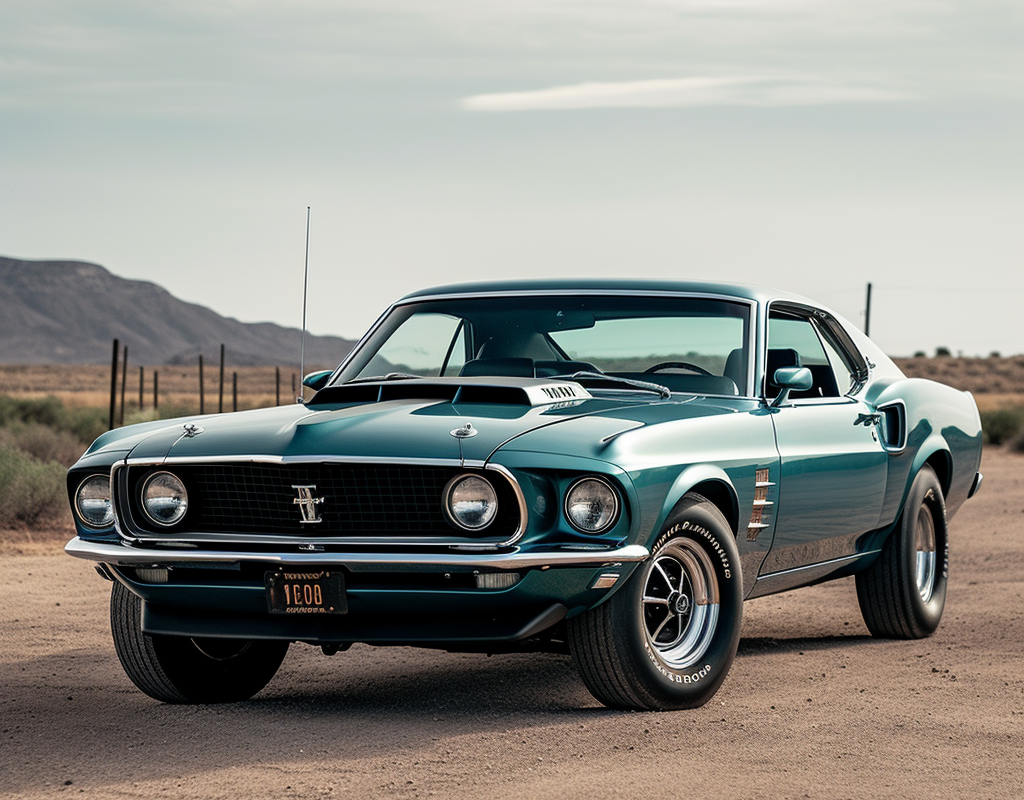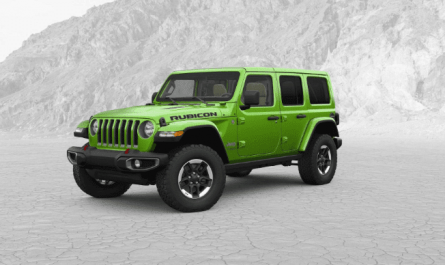Unleash the power of classic muscle cars! Discover the timeless allure and legendary legacy of these iconic rides.
The Evolution of Classic Muscle Cars
Classic muscle cars have a rich history that spans several decades. From their origins to the golden age and their place in the modern automotive world, the evolution of these iconic vehicles is a fascinating journey.
Origins of the Muscle Car
The term “muscle car” was coined in the 1960s to describe powerful and high-performing vehicles with large V8 engines, designed for straight-line speed (Arna Geneco Classic Cars). These cars were a product of the American automotive industry’s desire to create affordable yet highly capable vehicles that appealed to the youth market. The 1949 Oldsmobile Rocket 88 is often credited as the first true muscle car, featuring a powerful engine in a mid-sized body.
The Golden Age of Muscle Cars
The mid-1960s through the early 1970s is considered the “golden age” of muscle cars. This era saw the introduction of some of the most iconic and legendary models in automotive history. Cars like the 1964 Pontiac GTO and the 1967 Shelby Cobra 427 Super Snake became instant classics, capturing the hearts of car enthusiasts worldwide (Nationwide Vehicle Contracts). The golden age was characterized by powerful engines, aggressive styling, and exhilarating performance.
Muscle Cars: Then and Now
The popularity of muscle cars peaked in the late 1960s and early 1970s. However, the industry faced challenges in the mid-1970s due to increasing fuel prices and stricter emission regulations. These factors led to a decline in the production and popularity of muscle cars (Arna Geneco Classic Cars).
But like any automotive icon, muscle cars made a comeback. In the 1980s, manufacturers reintroduced muscle car models that combined performance with modern technology and improved fuel efficiency. Cars like the 1980 Pontiac Trans Am Turbo and the 1987 Buick Grand National GNX showcased the resilience and adaptability of the muscle car genre.
Today, classic muscle cars continue to hold a special place in the hearts of automotive enthusiasts. The demand for these vintage vehicles remains strong, with enthusiasts seeking out well-preserved or restored models. The market for classic muscle cars offers a range of options for those looking to own a piece of automotive history (merryjeepmas.com). Muscle car restoration has also become a cherished hobby, allowing enthusiasts to bring these timeless machines back to their former glory (merryjeepmas.com).
As the automotive industry continues to evolve, modern muscle cars provide a bridge between the past and the present. These vehicles pay homage to the classic muscle car era while incorporating modern technology, safety features, and performance enhancements. The spirit of the muscle car lives on, captivating enthusiasts and ensuring that the legacy of these legendary vehicles endures (merryjeepmas.com).
Iconic Classic Muscle Cars
When it comes to classic muscle cars, there are several iconic models that have left an indelible mark on automotive history. These vehicles not only embody the spirit of power and performance but also hold a special place in the hearts of vintage car owners. Let’s explore some of the most legendary classic muscle cars:
The 1969 Dodge Charger
The 1969 Dodge Charger is widely regarded as one of the most iconic muscle cars of all time. With its aggressive looks, powerful engine options, and distinctive fastback design, the ’69 Charger captures the essence of the muscle car era. It has been featured in popular culture, most notably in the “Dukes of Hazzard” television series. This legendary model continues to inspire and captivate enthusiasts with its timeless appeal.
The Ford Mustang GT
The Ford Mustang GT is a classic muscle car that has stood the test of time. Known for its powerful performance and unmistakable design, the Mustang GT has been a symbol of American muscle since its introduction in the 1960s. It strikes a perfect balance between performance and comfort, making it a popular choice among vintage car enthusiasts. The Mustang GT continues to evolve with each generation, solidifying its status as an enduring classic.
The Chevrolet Camaro ZL1
The Chevrolet Camaro ZL1 is synonymous with uncompromising power and exhilarating performance. With its impressive horsepower and track-ready capabilities, the ZL1 has become a favorite among speed enthusiasts. The aggressive styling and muscular stance of the Camaro ZL1 make it an attention-grabbing presence on the road. This classic muscle car is a testament to Chevrolet’s commitment to delivering thrilling driving experiences.
The Pontiac GTO
Considered one of the earliest muscle cars, the Pontiac GTO played a pivotal role in establishing the genre. Introduced in the 1960s, the GTO combined a powerful V8 engine with aggressive styling, creating a recipe for automotive excitement. The GTO became an instant legend, and its influence can still be felt in the muscle car world today. With its performance-oriented design and thrilling driving dynamics, the Pontiac GTO remains a cherished classic.
The Plymouth Barracuda
The Plymouth Barracuda holds a special place in the hearts of muscle car enthusiasts, particularly the Hemi-powered models. With its sleek and aerodynamic styling, the Barracuda exudes a sense of speed and power. This rare and highly sought-after classic muscle car is revered for its raw performance and distinctive design. The Barracuda represents the pinnacle of Plymouth’s commitment to creating thrilling and memorable driving experiences.
These iconic classic muscle cars have left an indelible mark on automotive history. Their performance, design, and enduring appeal continue to captivate vintage car owners and enthusiasts alike. Whether you’re a fan of the 1969 Dodge Charger, Ford Mustang GT, Chevrolet Camaro ZL1, Pontiac GTO, or Plymouth Barracuda, these legendary models represent the very essence of the classic muscle car era.
Restoring Classic Muscle Cars
Restoring classic muscle cars is a highly rewarding and fulfilling hobby for car enthusiasts like myself. The process of bringing these iconic vehicles back to their former glory is not only a labor of love but also a testament to the timeless appeal of these vintage automobiles.
The Rewarding Hobby of Restoration
For many vintage car owners, the restoration process is a way to breathe new life into these classic machines. Restoring a classic muscle car allows enthusiasts to showcase their craftsmanship, attention to detail, and passion for automotive history. It’s a journey that requires dedication, patience, and a deep appreciation for the art of automotive restoration.
Highly Sought-After Classic Muscle Cars
When it comes to classic muscle car restoration, there are numerous highly sought-after models that capture the hearts of collectors and enthusiasts alike. Some of the top contenders include the Chevrolet Camaro, Ford Mustang, and Dodge Challenger (Metro MMP). These iconic vehicles have become symbols of American automotive history, and restoring them to their original glory is a way to preserve their legacy for generations to come.
The Process of Restoring a Classic Muscle Car
Restoring a classic muscle car is a meticulous process that involves several key steps. It begins with thorough research and planning, as the availability of parts and the extent of restoration required can vary greatly depending on the specific make and model of the car. From disassembling the car to repairing or replacing components, every step must be carefully executed to ensure an authentic restoration.
The restoration process involves tasks such as bodywork, engine rebuilding, interior refurbishment, and refinishing. It requires expertise, time, and a significant financial investment. It’s important to have access to the necessary tools, resources, and technical knowledge to carry out each restoration task effectively.
Detail Items for Classic Muscle Car Restoration
When restoring a classic muscle car, attention to detail is key. It’s the small details that truly bring the car to life and showcase the authenticity of the restoration. Detail items such as rubber mats and pedal pads may seem insignificant, but they play an important role in completing the overall restoration.
By sourcing the right detail items and ensuring their proper installation, enthusiasts can achieve a level of authenticity that is essential for an accurate restoration. These details contribute to the overall aesthetic appeal and historical accuracy of the classic muscle car.
As a passionate enthusiast, I find great joy in restoring classic muscle cars. The process of reviving these legendary vehicles not only allows me to connect with automotive history but also provides an opportunity to showcase my skills and craftsmanship. Restoring classic muscle cars is an art form that preserves the heritage of these timeless machines and ensures their continued admiration by generations to come.
Defining the Classic Muscle Car
When discussing classic muscle cars, it’s important to understand the defining characteristics that set them apart from other vehicles. In this section, we will explore the key features that define a muscle car, the origin of the term “muscle car,” the distinction between muscle cars and pony cars, and the emergence of modern muscle cars.
Characteristics of a Muscle Car
A muscle car is typically a high-performance vehicle with a powerful engine, often equipped with at least a 300 cubic-inch V8 engine (iSeeCars.com). These cars are known for their fast straight-line acceleration, resulting from the combination of a relatively lightweight midsize body and a powerful V8 engine. The combination of power and agility makes muscle cars exhilarating to drive, capturing the essence of high-performance driving.
The Birth of the Muscle Car Term
The term “muscle car” was first used in 1966 to describe American-made two-door sports coupes with powerful engines designed for high-performance driving (Wikipedia). However, the first car to truly define this term was the iconic 1964 Pontiac GTO. This midsize, two-door coupe featured a large 389 cubic inch V8 engine, setting the stage for what would become the golden age of muscle cars. The GTO embodied the spirit of power, speed, and style, becoming a symbol of the muscle car era.
Muscle Cars vs. Pony Cars
Pony cars, such as the Ford Mustang and Chevrolet Camaro, are often considered a subset of muscle cars. These vehicles share many characteristics with muscle cars, including powerful V8 engines, rear-wheel drive, and two-door bodies. The distinction between muscle cars and pony cars can be blurry, but the core philosophy of performance, power, and style is shared between the two (iSeeCars.com).
Modern Muscle Cars
While the classic muscle car era spanned from 1964 to 1974, the spirit of the muscle car lives on in modern iterations. Manufacturers like Chevrolet, Ford, and Dodge continue to produce vehicles that pay homage to the iconic muscle cars of the past. These modern muscle cars, such as the Chevrolet Camaro Z28, Ford Mustang GT, and Dodge Challenger Hellcat, offer horsepower figures and acceleration numbers that surpass the original muscle cars from the 1960s and 1970s (iSeeCars.com). With advanced engineering and technology, these cars provide a thrilling driving experience while staying true to the core principles of power and performance.
Understanding the characteristics and history of classic muscle cars helps to appreciate their timeless appeal. Whether you’re a vintage car owner or an enthusiast, the allure of classic muscle cars continues to captivate generations, as they represent an era of power, style, and pure driving excitement. If you’re in the market for a muscle car, check out our article on muscle car for sale to explore the possibilities of owning a piece of automotive history.
The Popularity and Legacy of Classic Muscle Cars
Classic muscle cars have left an indelible mark on automotive history, captivating the hearts of vintage car enthusiasts and collectors alike. Let’s explore the enduring popularity and legacy of these iconic vehicles.
The Popularity of Classic Muscle Cars
During their heyday in the late 1960s and early 1970s, classic muscle cars reached the pinnacle of popularity. Their powerful engines, aggressive designs, and exhilarating performance captivated the imagination of car enthusiasts around the world. Models like the Pontiac GTO, Ford Mustang, and Chevrolet Camaro became symbols of American automotive prowess.
Classic Muscle Cars in the Market
Even today, classic muscle cars continue to be highly sought after, with some models commanding high prices in the market. Car enthusiasts and collectors cherish these vehicles for their timeless designs, historic significance, and nostalgic appeal. Owning a well-preserved or restored classic muscle car is a source of pride for many vintage car owners.
For those interested in acquiring their own classic muscle car, there are various avenues to explore. Online platforms, vintage car auctions, and specialized dealerships offer a wide selection of muscle cars for sale, allowing enthusiasts to find their dream ride.
The Decline and Comeback of Muscle Cars
Following their golden age in the late 1960s and early 1970s, classic muscle cars faced challenges that led to a decline in their popularity. Increasing fuel prices and stricter emission regulations in the mid-1970s impacted the production and performance of these powerful machines (Arna Geneco Classic Cars).
However, muscle cars made a comeback in the 1980s, with manufacturers introducing new models that combined performance with modern technology. Vehicles like the Pontiac Trans Am Turbo and the Buick Grand National GNX revived interest in muscle cars.
Notable Muscle Car Models Through the Years
Over the years, various models have become synonymous with the classic muscle car era. Here are some notable examples:
| Model | Year |
|---|---|
| 1969 Dodge Charger | 1969 |
| Ford Mustang GT | 1964 (first gen) |
| Chevrolet Camaro ZL1 | 1969 |
| Pontiac GTO | 1964 |
| Plymouth Barracuda | 1970 |
These models represent the pinnacle of classic muscle car design and performance, embodying the spirit of an era that continues to inspire automotive enthusiasts today.
The popularity and legacy of classic muscle cars endure as testaments to their timeless appeal. Their powerful engines, iconic designs, and rich history make them highly coveted among vintage car enthusiasts. Whether it’s the raw power of a vintage American muscle car or the beauty of its iconic design, classic muscle cars continue to captivate the hearts and minds of car enthusiasts worldwide.






